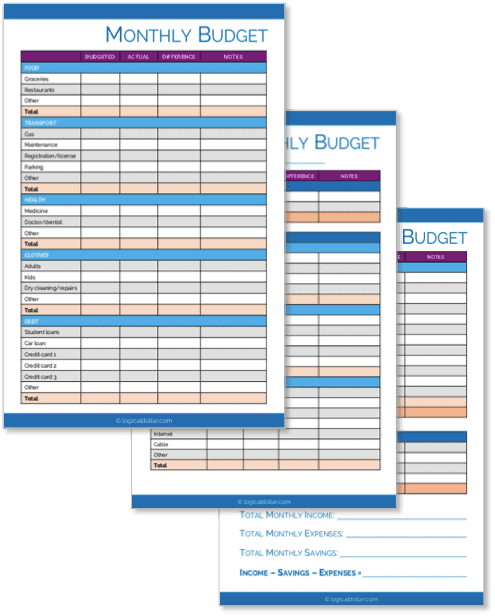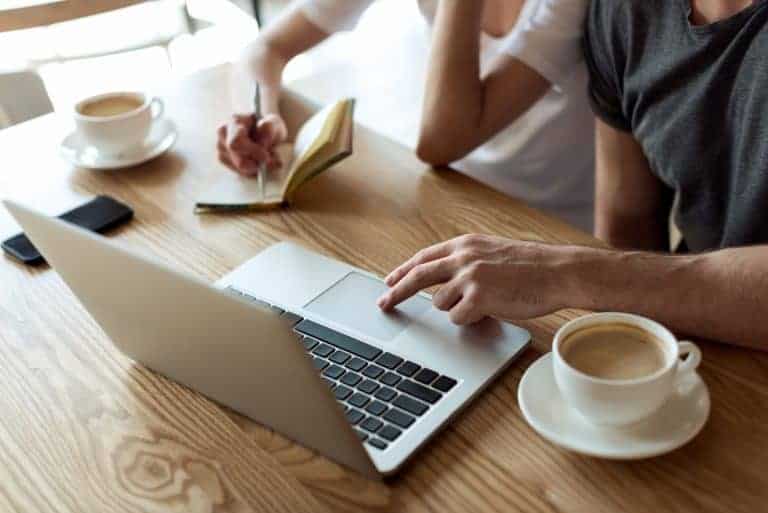With any goal, having a specific target in mind always makes it much more likely that you’ll actually achieve it. For example, it’s all well and good to say that you want to save more money this year. But having a set figure as your objective really means you’re setting yourself up for success.
And sure, you could aim to save a few hundred dollars or even a few thousand dollars by this time next year. But what about if you learned how to save $10,000 in a year to really boost that emergency fund or build your investments?
Of course, if you’re not in the habit of saving this much, it can seem hard to do at first. After all, there are a lot of expenses you encounter throughout the course of the year. Even though you may have a budget – which is great! – there are still a lot of recurring expenses you have to think about. This includes your housing payment, your utilities, grocery shopping, gas money, health insurance, car insurance, and numerous other unexpected expenses.
Despite that, it’s more than possible for you to save $10,000 a year, especially with some of these ideas on just how to do that. Take a look at them below to see which ones will work for you!

TAKE BACK CONTROL OF YOUR FINANCES
Our free budget planner will help you to quickly and easily take control of your money – instead of it controlling you.
Get it free for a limited time!
You’ll also join our mailing list to get updates on how to manage your money – unsubscribe at any time at the end of each email.
How to save $10,000 in a year
If you are looking for ways to save $10,000 in a year, there are plenty of options available. A few of the best ways for you to save $10,000 in a year include:
1. Pay yourself first
The most important thing you need to remember if you are looking for a way to save $10,000 in a year is that you need to pay yourself first. What this means is that you should aim to move money into your savings account before you pay anything else. That way, you’ll know that you’ve definitely covered your savings goals each month before getting to your other expenses
Now, this might seem backward to a lot of people. After all, if you need that money to pay your bills, why would you put it into your savings account before you have paid them? The answer is that even after you pay yourself and get closer to that goal, you should still leave yourself with plenty of money to cover your basic expenses.
The best place to put this money is separate from your daily checking account. For me, I like to keep my savings in a high interest savings account, just to be sure that my money is working as hard for me as possible. And my top pick for this is easily CIT Bank, especially as it’s got high interest rates and no fees!
CIT Bank – Money Market Account
Our pick: Best high interest savings account
Why? Well, because it’s got:
- 1.00% interest (over 11 times higher than the national average)
- No fees and only a $100 minimum deposit
- FDIC insured, meaning your money’s safe
2. Decide on your saving schedule
The next thing you need to do is decide on a saving schedule. What this means is that you need to think carefully about how frequently you want to contribute to your savings account. Ideally, you should create a separate account for your $10,000 savings goal.
For example, do you want to contribute to that account monthly? What that means is that you will need to deposit money into that account every month. And if you want to reach your goal of saving $10,000 by the end of the year, you will need to contribute between $830 and $840 to that account every month.

A lot of people like contributing to the account monthly because they can spread the money out over time. For example, housing is the biggest payment for most people every month. The housing payment might come out on the 1st of the month, and the savings contribution might be scheduled for the 15th.
3. Set yourself up for success
One of my favorite books for helping people to make changes in their lives is called Atomic Habits. It sets out some truly great strategies for helping you to change things in your life in a way that means you’ll actually stick with them. And one of these strategies involves removing anything that makes it harder for you to achieve whichever change you’re striving for.
In the case of exercising, this could be setting out your workout clothes the night before so everything is ready for you when you wake up. And when it comes to, say, saving $10,000 in a year, the same argument applies.
For example, one of the first things you may want to do is remove any applications from your phone that seem to somehow eat up a lot of your money. What do you think is the most frequently used application for impulse buying on your phone? If the answer is an online shopping app, time to delete it.
Or do you find that you are prone to using your computer to spend money you should not be spending? If so, you may even want to put a filter on your computer that will stop you from visiting those websites or remove your credit card information from your browser.
You may also be interested in: 13 Proven Tips to Save $1,000 a Month
4. Clip coupons (or use an app)
Given that food is one of the top three expenses for most households, you might want to consider ways that you can save money at the grocery store. For example, you may want to take a look at coupons that can help you save money on your grocery trips. Even though this might sound a bit outdated, there are still plenty of ways to find coupons that can help you save a lot of money.
That said, if you don’t have time to physically clip coupons – and who does – you should definitely consider checking out one of the apps that give you cash back on what you buy.
My personal favorite for that is definitely Ibotta. It gives cash back at thousands of in-store and online retailers, including most major ones you probably already shop at. Plus you’ll get a free $20 sign up bonus just for downloading the app!
Ibotta
Free sign-up bonus: $20
Ibotta’s a completely free app that gives you cash back on what you’re buying already – groceries, medicine, clothes and more.
In fact, users make $150 per year on average – not including your free $20 welcome bonus – with over $682 million having been paid out, so you know Ibotta is definitely legit.
Other ways to save money on food include that you should try to buy items in bulk when you go to the grocery store as part of your goal to focus on cooking frugal meals. If the items are not going to expire, you can save a significant amount of money if you are willing to buy them all at the same time. This could help you reduce your overall grocery expenses, making it easier for you to meet your goal of saving $10,000 a year.
5. Create a new budget
Next, it is time to create a new budget that will help you stay on track. For example, the first category you need to create is one for you. How much money do you make every month? Make sure you specify this amount as an after-tax amount.
Next, you need to create an area for all of your set, recurring expenses. If you have a mortgage payment, you need to include this as well as your real estate taxes and your homeowner’s insurance. If you have a rent payment, this is what you need to put at the top.
Also, include your gas bill, your water bill, your electricity bill, your cable bill, your internet bill, your phone bill, your car insurance, and your health insurance (if you pay for this). After this, include your grocery bill and the amount of money you spend on gas. These should be relatively fixed numbers that you can control, which will make it easier for you to live on a budget.

MANAGE YOUR MONEY LIKE A BOSS
Managing your money effectively can literally change your life. And starting a budget using our budget planner is the first step towards you doing just that.
Get it free for a limited time!
You’ll also join our mailing list to get updates on how to manage your money – unsubscribe at any time at the end of each email.
6. Track your progress
When you really start clamping down on your shopping habits, this can be stressful. You may even feel like your mental health is suffering. It is something that you need to get used to, but you also need to think about ways to pick yourself up from time to time. One of the ways to avoid burnout is to track your progress.
And one great way to do this is with an app that does this automatically. My absolute favorite app for this is Personal Capital. It’s completely free and allows you to see your entire financial situation in one place.
With access to a free personal financial dashboard, you’ll be able to see all of your accounts, including all of the money that’s coming in and out. You’ll also get personalized financial advice from the app.
Personal Capital
Our pick: Best money management app
Easily our choice for the best app to help you manage your money better.
Create a budget, track your spending automatically, receive personalized advice, get alerts about hidden fees and a ton more – and it’s all free.
Of course, you always have the option of treating this as a 10k savings challenge with a visual illustration, which can also be a super effective way to keep yourself encouraged. This could be as simple as drawing a thermometer with your goal at the top. Then, every time you contribute more money to your savings account, fill in another gap on the thermometer.
When you see the thermometer start to get full, you will feel good about what you have done! This will make it easier for you to stay on track. Consider using this method to help you save money while tracking your contributions, as this might help you stay motivated (along with other ideas, like doing a no-spend challenge).
7. Cut the fat out of your spending
One main reason why you have not been able to save a lot of money yet could be due to there being a lot of fat in your spending habits. So if you want to reach your savings goal, then you need to cut the fat out of your spending.
For example, there is a good chance you are spending way too much money going out to eat. Take a look at your bank statements for the past month and add up all the money you have spent getting take out or from going to restaurants. Do you really need to spend that much money going out to eat, especially if you’re looking for the cheapest way to live, or would you be better off cooking food at home?

Next, you should take a look at the money you spend at retail outlets because sometimes, you need to go to a retail store to get something. If you don’t own a winter coat and the temperature is dropping, then you need a coat! At the same time, do you really need the nicest coat in the store? If you’re trying to drastically cut expenses, the answer is: probably not – especially when it’s more than possible to be fashionable on a budget.
You could even use this to look at bigger expenses, like your debt repayments. For example, have you looked into refinancing and consolidating your loans into one lower monthly payment? Services like Credible make this super easy to do and in just a couple of minutes, you can save literally thousands of dollars over the life of your loans.
FYI: If debt is your biggest monthly expense, debt consolidation is a great way to reduce it in a short amount of time. Take two minutes to check out which options Credible has for you based on your personal circumstances.
8. Look at your subscriptions
Speaking of removing unnecessary expenses, you should take a look at your subscriptions as well, like streaming services or gym memberships you’re, ahem, not actually using. These are usually “hidden” expenses that you do not think about because your card gets charged automatically.
You could start by taking a look at free trials that may have expired. If you signed up for a free trial to watch a certain TV show, you may have forgotten to cancel the subscription. As a result, you may have been getting charged for that service for several months without realizing it. Make sure you put a stop to it.

That said, all this takes time that many of us just don’t have. This is why you should consider taking advantage of an app that will do it all for you automatically, like Trim.
Trim is an application that will take a closer look at where you are spending your money. Then, it will let you know if there is a service you are paying for that you are not using. It can even renegotiate or cancel your subscriptions for for you if it finds better deals – saving you even more time compared to if you had to sit on hold with customer service for hours.
To see just how much money you can save on your bills (automatically!), grab a free 14-day trial of Trim here.
9. Consider getting a side hustle
The only ways to save money and live better are to either reduce your spending or increase your income (or, ideally, both). This means that while it’s great to cut your expenses where you can, it can also really help to boost your earnings – especially if you commit to putting all that extra income straight into your savings account.
So if you are trying to save $10,000 in a year, you may want to consider creating a side hustle. After all, even after you change all of your shopping habits, there is a chance that you may still be a few dollars short of your monthly savings goal.
One of the ways to fix this issue is to consider getting a side hustle. There are plenty of options available, so you need to think about the best option for you. First, think about the things you do well. Do you like to drive? Do you like to cook? Do you like to do arts and crafts?
Then, find a way you can monetize that hobby. This is a great way for you to save extra money that could help you reach your goal. Furthermore, if you have an emergency expense, like a medical bill, you can lean on the side hustle instead of having to take money out of your bank account.
10. Save more money when you can
If possible, it can really help to save more money when you can by embracing the idea of living cheap. For example, if you know you tend to spend less money during the winter as it’s too cold to go outside a smuch, consider putting more money away during the cooler months. That way, when you go on vacation during the summer, you don’t feel the sting as much.
You might be able to save less money during the summer, go on vacation, and still stay on track to reach your goal. You do not necessarily have to remove all fun in your life as long as you plan and budget accordingly. For instance, these fun things to do with friends for free could give some great inspiration for still having a social life while saving money!

Importantly, remember that you will probably spend more money around Christmas. While having a Christmas savings plan can help, you may want to anticipate this added expense by saving more before you get to the month of December. That way, you don’t have to worry about sacrificing gifts because you are already ahead of your savings pace (although these cheap Christmas gifts for under $10 could help you get through that without too much damage to your bank account).
QUICK TIP: Consider combining your brand new budget with tracking all of your spending for one month. That will help you see exactly where every dollar is going – while also making it easier to see just where your problem areas may be.
11. Consider getting an accountant or financial planner to help you
This is not exactly easy to do, and it can be a bit of a challenge for people who have had to change their entire spending habits. Therefore, it might be helpful for you to hire a professional accountant or financial planner who can assist you in improving your spending habits. That way, you might find it easier to meet your goals at the end of the year.
Hiring an accountant can be particularly helpful if you have any sort of even minor complication with your earnings, as they may be able to help you save money on your taxes. There might be potential tax deductions that you could be overlooking, and there could be certain tax credits that are useful. That way, you might end up with a larger tax refund, which you can contribute towards your savings goals.
A financial planner is helpful because they can help you stay on track. A financial planner can also help you take a look at your expenses, figuring out other areas that you might be able to cut out. This can make a significant difference when you are trying to reach that goal at the end of the year.
12. Take a look at items you can sell
There is no way around it: there might be some situations where you need to generate some extra money. In this case, you may want to take a look at items you can sell. If there is something at home that you are not using anymore, you may want to consider selling it instead of throwing it away.
There are some items that can be particularly valuable that you certainly want to put on the open market when you do not need them anymore. For example, you might be thinking about getting a new computer or a new phone. These are items that can fetch a lot of money on the open market, even when they are significantly used, so you may want to consider selling them instead of just giving them away or throwing them out.
You might also want to consider selling your clothes instead of getting rid of them. If you are someone who goes through a lot of clothing items, you should consider selling your clothes on the market instead of simply tossing them away. This could be a great way for you to generate some extra cash.
How much do I need to save for having $10,000 a year?
If you plan on saving money every month, then you need to save $10,000 divided by 12 months. This equals approximately $835 every month. If you can save this much money every month, then you will end up with $10,000 by the end of the year.
Of course, if you want to reach this milestone, the answer to how much you need to save each interval will depend on how frequently you plan on saving. It just takes some simple math, which can be particularly helpful to do if you plan on doing this as some sort of 10k savings challenge.

If you are wondering how much you need to set aside to save $10,000 in a year, you might be taking the 10k savings challenge. If you want to reach this milestone, the answer is that it depends on how frequently you plan on saving. It just takes some simple math.
For example, a lot of people are paid every two weeks. Therefore, you may plan on saving money every two weeks toward this goal. If that is the case, then you need to divide $10,000 by 26 paychecks, which equals about $385 every paycheck. If you can set this money aside every paycheck, you should end up with $10,000 in savings by the end of the year.
If you would like to save money every week to reach the goal of $10,000, then you need to divide this number by 52 weeks. This equals about $190 to $195 dollars every week. If you can save this much money every week, you will have $10,000 in savings by the end of the year.
Is $10,000 in savings good?
For a lot of people, $10,000 in savings is great. If you have $10,000 in savings, you should be able to cover some emergency expenses, put some money toward a new car when you need one, and you might even be able to take this money and put it towards a house.
That said, the answer on whether $10,000 in savings is good will largely depend on how much money you need to save, and what your spending habits look like.
For example, if you have major debt to pay off, this might not be enough. You may have an expensive mortgage payment and costly medical bills, not to mention supporting your household. In those cases, if you have a lot of expenses every month, then you may need to save up more money to create an adequate liquidity fund.
Overall, then, the answer is that $10,000 in savings can be good depending on your average monthly expenses and your overall financial goals. You need to take a look at your current income, assess your expenses carefully, and figure out what your long-term financial goals are.

READY FOR MORE?
Join thousands of subscribers in getting regular tips in your inbox on how to take control of your finances and save more money – and, for a limited time, get our free budget planner as a gift!
You’ll also join our mailing list to get updates on how to manage your money – unsubscribe at any time at the end of each email.








